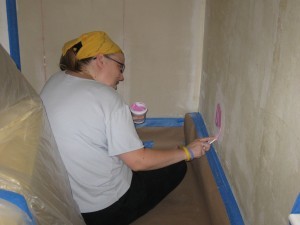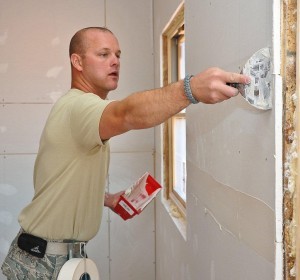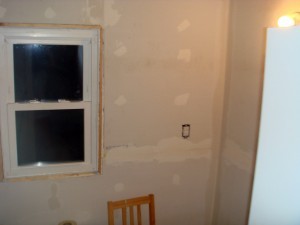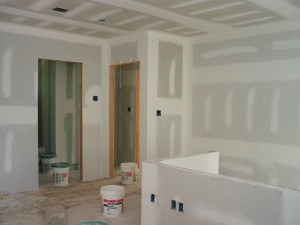About to undertake a home improvement project that involves drywall?
There are a bunch of different drywall tools to help make your job easier. But if this is your very first DIY project that involves installing or replacing drywall, then your biggest question is probably which of these you should be using:
- Spackle (seen here, on the left); or
- Joint compound (seen here, on the right)


Generally, the term joint compound is used by those who, for whatever reason, feel they are savvy with the words of the trade.
But getting down to the root of the issue, are they both the same thing?
Let’s just say they’re very similar.
Here’s how to fix drywall with joint compound versus using spackle…
How To Fix Drywall With Joint Compound
Joint compound comes in containers ranging from 1 quart to 5 gallons. Its primary use is to provide a bed to lay tape which is intended to cover the seam between 2 pieces of sheetrock (or drywall).
As you can guess, in a large construction project the 5-gallon bucket will be the most common choice since you will be going through a lot of this stuff.
Joint tape comes in 2 forms:
- The first is a simple paper spooled on a roll. Contractors tend to use this type as it’s the most cost-effective.
- The remaining amateurs among us (myself included) use a fiberglass mesh tape that comes with adhesive applied to it, which makes installation much easier. You simply cut it to length and stick it on the seams, followed by a layer of joint compound.
Less is more when it comes to joint compound. The more you put on, the more you must sand off when feathering the joints. Excessive sanding creates more work when it comes to dusting inside your house.
Check out this video showing how to tape a drywall joint:
How To Fix Drywall With Spackle
Spackle, on the other hand, is a brand name product manufactured by the Muralo Company.
Its primary intended use is to make small repairs quickly in order to prepare a room for painting.
It is available in smaller containers, and when applied with a putty knife it will be dry and ready for sanding and painting within about 1 hour.
Spackling is a great way to cover all of the nail holes in a wall.
After you’ve made minor repairs to the drywall using spackle, follow these spackling tips to ensure that you get a top-quality paint job.
Here’s a video showing how to spackle a wall before you paint:
Joint Compound vs Spackle
To some extent, spackle and joint compound can be interchanged without issue.
Spackle is designed to dry quickly with little or no shrinkage, which makes it a bit more convenient if you want to get on with your painting.
Joint compound will take care of both large and small repairs in drywall, but you usually have to wait to let it dry overnight before sanding. Plus, when taping joints, it may take 2 or even 3 applications to finish a seam properly.
These photos show the end result after spackling (left) versus using joint compound (right)…
More About Repairing Drywall
- Drywall Tools That Make The Job Easier
- How To Drywall 101
- Tips & Tricks For Installing Drywall
- How to Hang Drywall On Basic Walls
I’ve been involved in RVing for 50 years now — including camping, building, repairing, and even selling RVs. I’ve owned, used, and repaired almost every class and style of RV ever made. I do all of my own repair work. My other interests include cooking, living with an aging dog, and dealing with diabetic issues. If you can combine a grease monkey with a computer geek, throw in a touch of information nut and organization freak, combined with a little bit of storyteller, you’ve got a good idea of who I am.



